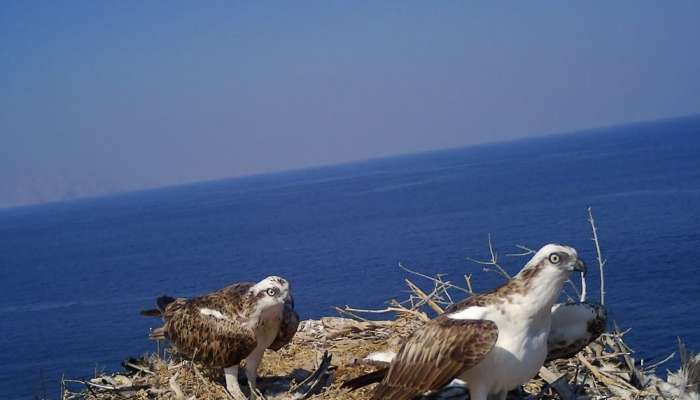
Khasab: The Environment Authority has conducted a comprehensive field study to monitor and document the nesting sites of the Osprey in the Musandam Governorate, as part of its ongoing efforts to enhance marine biodiversity conservation programs in the Sultanate of Oman.
The Osprey is a large bird of prey, distinguished by its white head, brown wings, powerful talons, and yellowish eyes. It typically inhabits coastal areas and islands, feeding on surface fish. Although globally classified as a threatened species, it is considered less vulnerable in the Sultanate of Oman, making its monitoring and behavior studies essential for its conservation.
Engineer Noura bint Abdullah Al-Shehhi, Head of the Biodiversity and Vegetation Development Department at the Environment Department in Musandam Governorate, said that this study represents an important step towards documenting marine biodiversity in the Sultanate of Oman, noting that its results will contribute to developing effective strategies to protect the osprey and its natural habitats.
She added that the study results showed the detection of 45 osprey nests in several locations within the governorate, including 19 nests containing eggs. The number of eggs in each nest ranged from one to four. The survey was conducted between January and April 2025, using modern technologies including trap and professional cameras and GPS devices, in addition to field surveys carried out by a specialized team from the authority. The data were analyzed and evaluated using Geographic Information Systems (GIS) software and compared with the results of regional and international studies to assess the bird's behavior and environmental characteristics.
She explained that the osprey prefers to nest in close groups on the mountainous outcrops and remote islands of the Musandam Peninsula, particularly in the eastern part of the peninsula in the Khasab region, while the western areas in the Bukha region and parts of the Dibba region are its main feeding grounds. She indicated that the study's findings revealed several natural threats facing the osprey, including habitat degradation, climate change, and attacks on nests and eggs by mountain foxes, Indian crows, and terns. No human-induced challenges or hunting activities threatening the bird were recorded in the region.
For his part, Salem bin Humaid Al-Junaibi, Director of the Environment Department in Musandam Governorate, explained that the Environment Authority is working to support research and documentation projects related to wildlife in the Sultanate of Oman, stressing that this project comes within the Authority’s efforts to preserve and develop both terrestrial and marine wildlife, in addition to strengthening the system of environmental studies aimed at expanding the national database for biodiversity, and supporting national efforts to preserve endangered species and ensure the sustainability of ecosystems in the Sultanate of Oman.